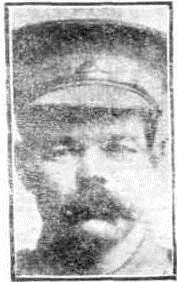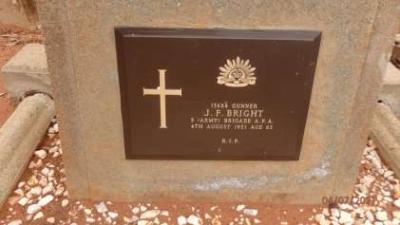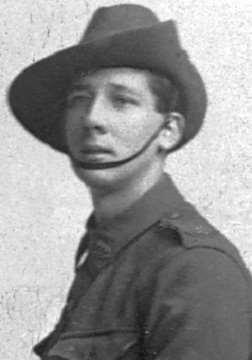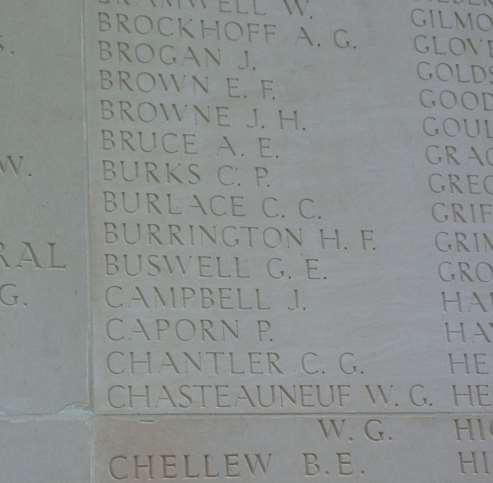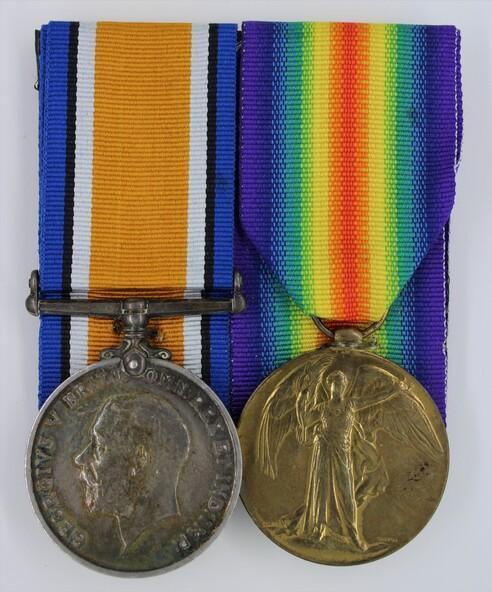Not Forgotten, 4758 Private George Edward BUSWELL, 48 Battalion AIF, World War 1
Commemoration of the military service of 4758 Private George Edward Buswell, 48 Battalion AIF, killed in action, 11 April 1917.
Private George Edward Buswell, listed as Bowell on the war memorial, a farm hand from Minnivale, was born and educated in Moulton in Northampton, England and the son of Frederick and Mary Ann Buswell of Moulton, England. On 24 November 1915 Private Buswell enlisted at Perth in the 16th Battalion and on landing in France was transferred to the 48th Battalion. George Buswell embarked from Fremantle on HMAT A38 Ulysses on 1 April 1916, heading to Alexandria where he then embarked for Marseilles, arriving on 14 June 1916.
On 7 August 1916 George Buswell was admitted to hospital in Camiers, France with a severe shrapnel wound in the right shoulder and was transferred to England where he spent time in the 3rd Auxiliary Hospital in Manchester from 22 August until 10 October 1916. By 14 March 1917 George was back in France.
The 48th’s first major battle on the Western Front was Pozières where the battalion endured what was said to be heaviest artillery barrage ever experienced by Australian troops and suffered 598 casualties. Almost immediately the battalion was required to defend ground captured during the battle of Mouquet Farm. On 11 April 1917 the 48th Battalion was involved in the Battle of Bullecourt, was one of several villages in northern France to be heavily fortified and incorporated into the defences of the Hindenburg Line in 1917.
In March 1917, the German army had withdrawn to the Hindenburg Line in order to shorten their front and thus make their positions easier to defend. This move was rapidly followed up by the British and Empire forces, and they launched an offensive around Arras in early April 1917. An attack to assist the Arras operations was launched on Bullecourt on 11 April 1917 by the 4th Australian and 62nd British Divisions. The attack was hastily planned and mounted and resulted in disaster. Tanks which were supposed to support the attacking Australian infantry either broke down or were quickly destroyed. Nevertheless, the infantry managed to break into the German defences. Due to uncertainty as to how far they had advanced, supporting artillery fire was withheld, and eventually the Australians were hemmed in and forced to retreat. The two brigades of the 4th Division that carried out the attack, the 4th and 12th, suffered over 3,300 casualties; 1,170 Australians were taken prisoner - the largest number captured in a single engagement during the war.
George Buswell was reported missing in action on 11 April 1917 and later confirmed killed in action at Bullecourt in France on 11 April 1917 at the age of 29. Private Buswell had no known grave and is commemorated on the Australian National Memorial at Villers- Bretonneux.
Private Buswell wasawarded the British War Medal and the Victory Medal. George’s mother wrote, for the Roll of Honour Circular: “Four ‘gritty’ boys, school chums, finding the home agricultural pulse to be weak, suddenly decided to emigrate to West Australia. They all settled down, and did well. George Buswell went into the bush, and gained real estate.”
Details
Details
When the Great War broke out in Europe in 1914, Dowerin was an isolated farming district, several days travel by horse or by coach from Perth. Over the succeeding four years at least 176 men and one nurse served in the armed forces of the Empire. The names of the men who served can be read on the Honour Roll in the Dowerin Town Hall or can be accessed on the museum section of the Shire of Dowerin website.
Fifty-one men from the district died in the Great War and their names are inscribed on the Dowerin War Memorial which was unveiled on ANZAC Day 1936. Subsequent conflicts have seen more names memorialised and each ANZAC Day their sacrifice is honoured and remembered by the community.
For some years Diane Hatwell had been intrigued by the names on the Dowerin War Memorial. Some were familiar with the families still in the district but some not so. Diane felt It was important for the community that when we said each ANZAC Day “We will remember them”, we had some idea of who and what we are remembering. She set about, to find out who they were, what they were doing in the Dowerin district, and where and how they died. These pages presented through Collections WA represent the current state of this ongoing research and community response.
Open in Google Maps
Nearest geotagged records:
- Not Forgotten,4732 Acting Corporal John Livingstone BENNETT, 11 Battalion AIF, World War 1 (0km away)
- Not Forgotten, 7483 Private Arthur James HICKS. 11 Battalion AIF, World War 1 (0km away)
- Not Forgotten, 3440 Private Charles Thomas DAY, 16 Battalion AIF, World War 1 (0km away)
- World War 1, Australia, Western Australia, 1243 HAWTIN, 10 Light Horse (0km away)
- Not Forgotten, 865 Corporal Clement Cook Junction FREARSON, 44 Battalion AIF, World War 1 (0km away)
- Not Forgotten, 3270 Private Leslie Harold MEDBURY, 46 Battalion AIF, World War 1 (0km away)
- World War 1, Western Australia, Perth Heritage Week Exhibit, GLOWREY, 16 Battalion AIF (0.01km away)
- Not Forgotten, 772 Private Robert Clyde SKERRY, 28 Battalion AIF, World War 1 (0.01km away)
- Not Forgotten,2372 Private Maitland Hazel MAITLAND, 43 Battalion AIF, World War 1 (0.01km away)
- Not Forgotten. 200 Private Harold Reeve BEECHEY, 16 Battalion AIF, World War 1, and 1368 Private Christopher William Reeve BEECHEY, 4 Field Ambulance AIF, World War 1 (0.01km away)
Other items from Dowerin District Museum
- Not Forgotten, 2838A Private Albert George BROADBENT, 5 Pioneer Battalion AIF, World War 1
- Not Forgotten, 13684 Gunner James Frederick BRIGHT, 3 Field Brigade Ammunition Column AIF, World War 1
- Not Forgotten,4732 Acting Corporal John Livingstone BENNETT, 11 Battalion AIF, World War 1
- Not Forgotten. 200 Private Harold Reeve BEECHEY, 16 Battalion AIF, World War 1, and 1368 Private Christopher William Reeve BEECHEY, 4 Field Ambulance AIF, World War 1
- Not Forgotten. 7682 Private Alfred Edward AINSWORTH, 51 Battalion, World War 1
